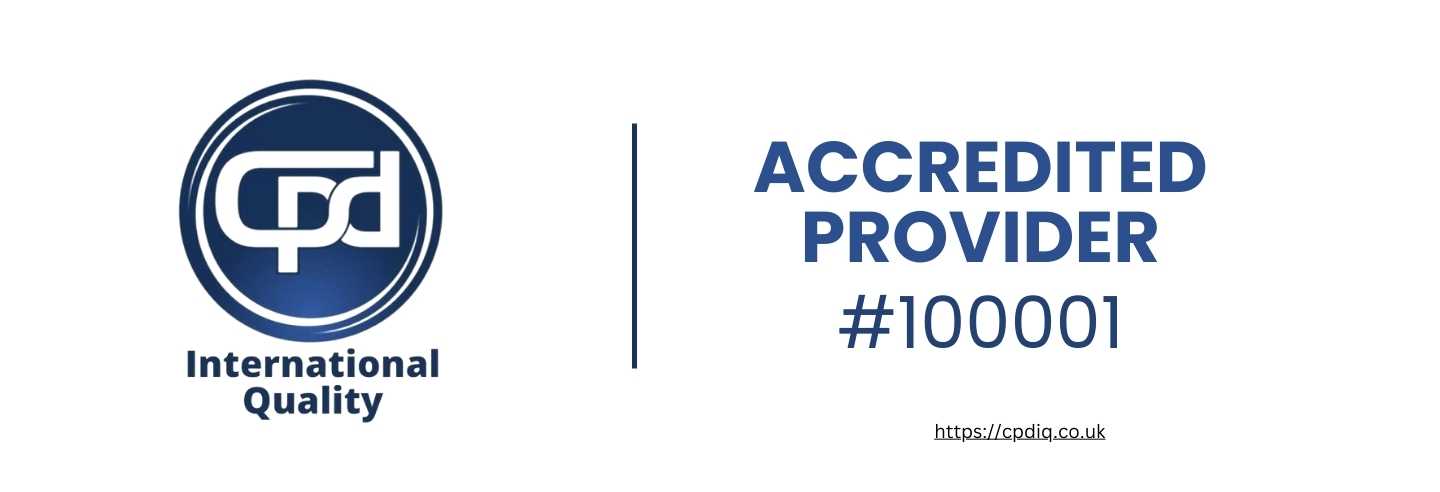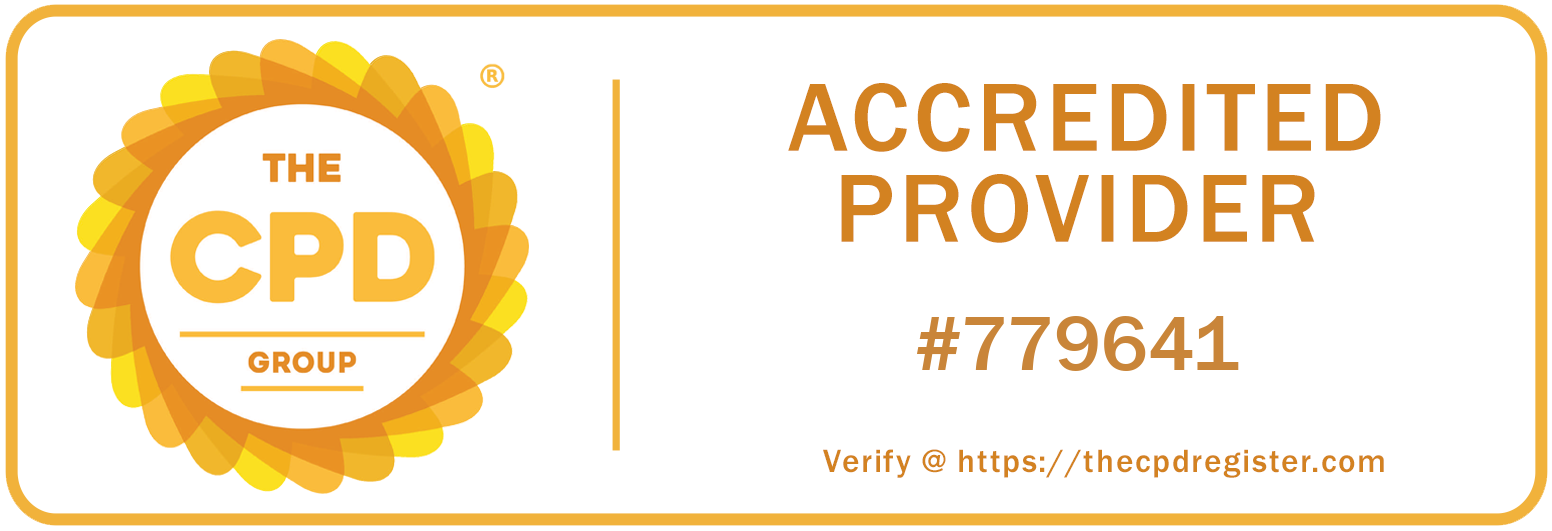
The importance of good personal hygiene for kids cannot be stressed enough when it comes to kids’ well-being, self-confidence, and the development of long-term habits for a prosperous life. This blog featuring 21 exclusive norms of personal hygiene for kids in 2024 provides a clear-cut and practical manual with tips for parents and caretakers. Are you ready to get your little one on the path to ultimate cleanliness? Let’s begin!
Hand Washing
When to Wash Hands
Before Meals
Kids are often taught to wash their hands before eating, as this prevents the ingestion of germs, which in turn reduces the risk of foodborne infection. Therefore, this simple habit is beneficial for health.
After Using the Bathroom
Washing hands after toileting is a must to get rid of bad smells, especially bacteria and viruses. Kids should be trained to always wash hands after they toilet to prevent disease.
After Playing Outside
After outside play, kids’ hands will be dirty. They will also carry bacteria on their hands. Washing hands will remove dirt and bacteria. This will help to prevent them being put into the mouths or eyes along with other places they shouldn’t go.
Proper Hand Washing Technique
Steps for Effective Hand Washing
Train children to use clean, running water to wet their hands, then apply soap and rub hands together for at least 20 seconds, making sure to rub the backs of the hands, between the fingers, and under the nails. Finally, they should rinse their hands well and dry them with a towel.
Fun Ways to Time Hand Washing (Singing Songs, Using Timers)
Engage them by timing hand washing to a song or using a timer. Have them wash two renditions of ‘Happy Birthday’. Or sing ‘Twinkle, Twinkle, Little Star’ until they’re done.
Bathing
Regular Bathing Routine
Frequency of Baths
Children must take a bath to prevent skin diseases and keep them clean. They should wash their bodies every day or every alternate day. The frequency of bathing depends on their activities. The younger age group needs a bath every day, as described in this model essay.
Importance of Using Soap and Shampoo
When using soap and shampoo, any dirt, oils, and bacteria within the skin and hair are washed away. Children should learn to use gentle soap for the body and mild shampoo for the hair as soon as possible to create hygienic conditions.
Bathing Safety Tips
Supervising Young Children
Supervise young children at all times while in the bath or other bodies of water. Don’t let children bathe alone, not even for a minute, because they can drown in as little as an inch of water or slip in the tub.
Using Non-Slip Mats and Safe Water Temperature
Place shower mats in the bathtub to prevent slipping. Ensure that you have the perfect water temperature (not hot) to prevent burns. Check the water temperature with your forearm or elbow before allowing kids into the bath.
Oral Hygiene
Brushing Teeth
Importance of Brushing Twice a Day
Brushing teeth with a toothbrush twice a day will help remove plaque and prevent cavities and gum disease. Kids need to brush in the morning and before bed.
Proper Brushing Technique
Regardless, teach them to use only a pea-sized strip of fluoride toothpaste with a soft-bristled toothbrush. They should brush all the surfaces of their teeth in short, circular motions for at least two minutes, being sure to get the gumline.
Flossing
Introducing Flossing to Kids
Start helping your kids to floss as soon as their teeth start to look close together. This way they will learn to floss between each tooth and scrape out particles of food, as well as plaque that their toothbrushes just cannot dislodge.
Benefits of Flossing for Dental Health
Flossing is the practice of cleaning our teeth between individual teeth and along the gum lines to remove food, which helps prevent cavities and gum diseases and gives us healthier gums and a much cleaner mouth.
Hair Care
Regular Hair Washing
Frequency of Washing Hair
How often you wash your child's hair depends upon his hair type and the level of activity. If it's normal hair and he's not likely to get greasy, wash it 2-3 times a week. For those little ones whose hair gets extra greasy or the proud owner of very active kids, go for more frequent washing.
Choosing Appropriate Shampoo for Kids
Wash with a tear-free children’s shampoo. Pick a shampoo that’s cruelty-free and free from the harsh chemicals found in adult-centred products to keep their hair and scalp healthy and avoid any problems.
Combing and Styling
Importance of Regular Combing
These include washing, rinsing, wearing decorations, brushing, and combing; all these actions can prevent tangles and dishevelled hair. In addition, brushing and combing also function to evenly distribute the oil from the scalp on the hair shaft, thereby nourishing the hair.
Tips for Managing Different Hair Types
For straight hair, use a wide-toothed comb to brush out gently. For curly or wavy hair, use a detangling spray and a wide-toothed comb so you don’t break hair. Have kids learn how to brush hair gently so that it doesn’t become damaged.
Nail Care
Trimming Nails
How Often to Trim Nails
All children should have their nails trimmed every week; it will keep their nails short and clean. This will also stop the dirt from sticking to the bottom of them and decrease the chances of scratches.
Using Safe Nail Clippers
Use child-sized clippers, as these tend to be smaller and safer, and cut the nails straight across so that no corners turn into an ingrown nail—and gently file rough edges.
Preventing Nail Biting
Encouraging Kids to Avoid Nail Biting
Explain the reasons behind why nail biting is damaging (e.g., risk of infection and dental damage) and provide alternative behaviours the child can engage in, such as squeezing a stress ball or chewing sugar-free gum.
Tips for Breaking the Habit
Keep nails trimmed and filed so they aren’t as easy to chew; use a bitter-tasting nail polish that discourages nail biting; praise and reward children when they don’t bite (as silly as this sounds, it has been shown to work).
Skin Care
Daily Skin Care Routine
Using Gentle Soap and Moisturisers
Encourage your child to use a mild soap on all of his skin despite having eczema. Choose a soap that is fragrance-free, dye-free, and not too harsh. If dryness persists, make sure your child moisturises his skin immediately after bathing when the skin is still damp and likely a little red. This combination of treatments will minimise redness and scaling all year long.
Protecting Skin from Harsh Weather
Apply more moisturiser in winter to shield against your cold, dry home air, and make sure that children hydrate properly while using light, non-greasy lotions in the summer.
Sun Protection
Importance of Using Sunscreen
Lather children with sunscreen with a sun protection factor (SPF) of 30 or higher to reduce harmful UV rays from hitting their skin. Reapply every two hours, especially after swimming or sweating.
Wearing Hats and Protective Clothing
Encourage children to wear wide-brimmed hats on sunny days, and teach all children to wear sun-protective clothing. Sunburn, which slows the body’s normal repair processes, can be avoided, and long-term skin damage decreased by preventing sunburn.
Ear Hygiene
Cleaning Ears Safely
Avoiding the Use of Cotton Swabs Inside Ears
Parents should warn children to keep cotton swabs and other objects out of their ears: sticking things inside can hurt the ear or push wax further in. The ear canal drains downward. Wax migrates outward.
Using a Damp Cloth to Clean Outer Ears
Wrap a damp cloth around the finger, push it into the ear, turn it around a couple of times to brush away the dirt or earwax, then pull the finger out slowly, with your cloth firmly attached to it. Ear hygiene achieved! Not too hot, not too cold, but just right. This method yields good results regardless of the source of otalgia—be it the outer ear, the middle ear, or the inner ear.
Recognizing Ear Problems
Signs of Ear Infections or Comfort
Watch for tugging at the ears, difficulty hearing, or evidence of discharge or infection. You might also see pain, fever, or irritability.
When to See a Doctor
Although many signs of an ear infection can be treated at home or your doctor’s office, there are a few red flags to watch out for. If you or your child experience persistent pain, redness, discharge, swelling or hearing loss, ringing in the ear, or a feeling of fullness in the ear, it is best to seek the advice of a healthcare professional. Ear infections can lead to permanent hearing loss and damage, but catching the problems early can help to avoid these long-term complications.
Foot Care
Washing Feet Daily
Importance of Washing Feet During Baths
Then, when they have a bath, show them how to wash their feet properly with soap between their toes to wash away the sweat and bacteria that cause infection.
Drying Feet Thoroughly to Prevent Fungus
Have children dry their feet thoroughly after washing (especially in between the toes); fungal infections love feet moistened with sweat unless they are dried completely.
Choosing the Right Footwear
Selecting Comfortable and Well-Fitting Shoes
To prevent blisters and other forms of foot pain, be sure to wear shoes that fit properly and offer adequate support. Many parents go shoe-shopping with their children instead of simply fitting them in an old, ill-fitting pair.
Avoiding Shoes That Cause Blisters
Do not wear shoes that pinch or rub; blisters and sores will eventually result. Break in new shoes gradually, or to start, use padding material to protect from blisters.
Hygiene During Illness
Handling Coughs and Sneezes
Using Tissues or Elbows to Cover the Mouth and Nose
Teach your children to always cover their mouth and nose with a tissue or to their elbow when they cough or sneeze. This limits the transfer of germs to others around them, which also reduces the risk of infection.
Washing Hands After Coughing or Sneezing
Get kids in the habit of washing their hands immediately after a cough or sneeze, so they don’t smear germs on something or onto someone else.
Staying Home When Sick
The Importance of Resting and Avoiding Spreading Illness
Convince the audience that staying home and resting when sick will help them recover more quickly and prevent them from sharing the sickness with classmates and teachers.
Maintaining Hygiene to Prevent Further Infection
Teach children to practise good hygiene while they are sick, such as washing hands frequently and keeping school supplies and backpacks separate from other kids.
Clean Clothing
Wearing Clean Clothes Daily
Changing Clothes Regularly
Make it clear to children how important it is to wear a clean top/bottoms/whole outfit/underwear every day as a part of their daily hygiene routine to stop them from smelling. If children don’t remain alert or are ill and sleepy/dizzy/sick, they might not be able to pay attention to their body odour and have a harder time caring.
Importance of Wearing Clean Underwear
We must wear underwear every day. It can prevent the skin from having some irritations and infections.
Handling Dirty Laundry
Teaching Kids to Place Dirty Clothes in a Hamper
The idea is to teach them to throw dirty clothes in the laundry hamper when they take it off, to help them keep their room neat and make sure dirty clothes are taken out in time to get washed.
Involving Kids in Simple Laundry Tasks
Give children small jobs, such as sorting clothes into whites, colons, and darks or folding clean laundry, to learn responsibility and the value of clean clothes at an early age.
Hygiene at School
Using School Restrooms
Washing Hands After Using the Restroom
Tell children that it is always necessary to wash their hands after using the toilets in school. Good handwashing is crucial to stop the spread of germs.
Respecting Restroom Cleanliness
Teach children that flushing toilets and disposing of trash properly is what one does in a school restroom. Similarly, if they observe something is not working properly in any of the restrooms, they should tell a teacher or janitor.
Keeping Personal Items Clean
Importance of Not Sharing Personal Items (e.g., Combs, Hats)
Teach children to not share items such as combs, hats, and water bottles, as they may contain lice as well as other germs.
Keeping School Supplies Organised and Clean
Keep their school supplies organised, clean, and in shape. Wipe down their desk regularly and keep their backpack clean to help ward off unwanted guests.
Hygiene After Physical Activity
Showering After Sports
Importance of Showering After Physical Activity
Explain to children why they should take a shower immediately after engaging in exercise. Having sweat, dirt, and bacteria build up on their bodies can lead to body odour and even skin infections.
Using Soap and Shampoo to Remove Sweat
Teach personal hygiene for kids so that if they shower after sports, they should be extra careful to wash the whole body and hair with soap and shampoo.
Changing into Clean Clothes
Avoiding Staying in Sweaty Clothes
Have children remember to take off sweaty clothes right away after exercise. Sitting around wearing no-longer-clean garb exposes the skin to more abrasion, which raises the spectre of infection.
Wearing Fresh Clothes after Sports
Teach children to always wear fresh clothes after playing to feel well and clean up their bodies. Furthermore, they will avoid the foul.
Hygiene During Puberty
Understanding Body Changes
Discussing Hygiene Changes During Puberty
With the onset of puberty come some pretty significant changes, so talk about these with your child—e.g., how hormonal changes might lead to more perspiration and oilier skin, and the need to up their personal hygiene for kids.
Importance of Regular Hygiene Practices
Encourage regular personal hygiene for kids to keep up with these body changes and stay healthy.
Dealing with Sweat and Odour
Using Deodorant or Antiperspirant
Introduce deodorant or antiperspirant in the morning to control sweat and body odour. Schoolchildren can choose between the two, but explain how to use them. Encourage the adolescent to use or wash these items close to bedtime.
Bathing More Frequently
Encourage daily bathing around the onset of puberty to keep the skin clean and odour-free. More frequent showers are needed to manage the increased sweating and sebum production of puberty.
Dental Visits
Regular Check-Ups
Importance of Visiting the Dentist Twice A Year
Twice a year, you should be seeing your dentist for a check-up. This prevents moderate or serious problems that might occur to your teeth. This is important for your smile and also for your life and health.
Preparing Kids for Dental Visits
Tell children in advance what to expect when they see a dentist, and this can reduce fear of the unknown for personal hygiene for kids.
Preventing Dental Issues
Teaching Kids About Cavities and Gum Disease
Teach children to take care of their teeth and gums by explaining what causes cavities and gum disease, as well as how to avoid them by brushing, flossing regularly, eating foods rich in calcium, and drinking water.
Encouraging Healthy Eating for Dental Health
Encourage children to eat fruits, vegetables, and dairy products and to minimise sugars in their diet.
Hydration
Drinking Enough Water
Importance of Staying Hydrated
Everyone needs to keep hydrated. Children should be taught specifically why it is important to drink water every day for personal hygiene for kids. This will help them in adulthood. They will learn that water is essential for the body to work and feel energetic.
Encouraging Kids to Drink Water Regularly
Encouraging your child to drink water several times a day, especially during and after physical activity, and providing them with a reusable bottle to take to school and activities can be beneficial for the personal hygiene for kids.
Avoiding Sugary Drinks
Limiting Soda and Juice Intake
Describe the dangers associated with sugary drinks, such as soda and juice. These drinks cause tooth decay and contribute to overall unhealthy weight gain. Push for moderation instead.
Choosing Water or Milk Instead
Encourage water or milk as an alternative to sugary drinks. Drinking water helps to keep personal hygiene for kids' sugar levels stable, ensuring hydration. Milk enhances their healthy intake as it is packed with nutritious elements, including calcium.
Sleep Hygiene
Establishing a Bedtime Routine
Consistent Bedtime Schedule
Children should have regular bedtimes to get enough sleep. A regular sleep order affects one’s health and mood. In brief, I believe that a nighttime routine should be constant to help children get enough nights of proper sleep. Firstly, having a set bedtime supports artificial health issues, such as insomnia. Secondly, youngsters who keep the same sleep pattern can better manage their daily activities. In contrast, there are negative aspects to sticking to a schedule.
One former tenant's rationale for youngest partners is the conflict that can prevent a family from achieving normal family activities such as evenings at home together and vacations elsewhere. Another fact I would like to bring to compatibility is that stim regiment can cause certain health issues in children if correct efforts have not been made to regulate their safety. To conclude, maintaining an innovation inhibits children from getting enough Saturday and affects their preparation for their school day on Monday.
Importance of a Good Night’s Sleep for Overall Health
A decent eight hours' sleep provides better concentration and moods throughout the day, while a good night's sleep significantly contributes to our health and well-being.
Lack of sleep can impair our ability to concentrate and feel positive about life. After a long working day, it's important to have a good night's sleep, as it helps the body recover. Additionally, sufficient rest is crucial for growing children to appropriate height; hence, they need a minimum of ten hours' sleep to develop healthily.
Sleep is essential for everyone, but the number of hours varies with age. Teenagers can require up to 12 hours of sleep a day, especially girls who have just started their period. Often, they want to sleep longer in the morning, but their parents don't understand their need for rest.
In conclusion, despite different sleeping needs, everyone requires at least eight hours of sleep a day on average.
Creating a Clean Sleep Environment
Keeping Bed Linens Clean
Let the habits begin with bed linens: teach children, starting from the early school-age period, to change their sheets. How often will it depend on the child and family's lifestyle? Changing bed linens makes the room more pleasant for sleeping, prevents skin problems, and, in general, contributes to good personal hygiene for kids.
Ensuring a Tidy Bedroom
Suggest personal hygiene for kids that they keep their bedrooms tidy and clutter-free. Maintaining a clean and orderly space helps to foster better sleep and a more comfortable situation.
Toilet Hygiene
Proper Wiping Technique
Teaching Kids to Wipe Properly After Using the Toilet
Teach children to wipe themselves properly, girls from back to front so as not to get infections, and boys thoroughly to keep clean.
Importance of Washing Hands Afterward
Concentrate on washing your hands well.
Washing hands helps stop germs, but it has a bigger impact because keeping our hands clean stops us from getting sick.
Using the Toilet Independently
Encouraging Independence in Using the Toilet
Older children should be helped to use the toilet independently, which helps build their self-confidence as they get older.
Providing Step Stools for Younger Children
Offer young children step stools to help them reach the toilet and the sink more comfortably; that makes it easier for them, so it’s more likely that they will continue good personal hygiene for kids.
Hygiene for Girls
Menstrual Hygiene
Educating Girls About Menstruation
Teach girls about menstruation, explaining what will change in their bodies and how they can deal with it; awkward or embarrassing discussions become far less negative when you’re prepared, and it also makes girls feel more confident.
Proper Use of Sanitary Products
Help girls understand how to use pads and tampons. Stress the necessity of changing them frequently to preserve personal hygiene for kids and guard against infections.
Intimate Hygiene
Importance of Daily Cleaning
Describe the need for daily cleaning in intimate areas and outline the importance of using water and mild, unscented soap to lower pain and reduce infections.
Using Gentle, Appropriate Products
Suggest effective, gentle, appropriate products for genital hygiene. No harsh soaps, powders, or products with strong fragrances must be used.
Hygiene for Boys
Genital Hygiene
Importance of Daily Cleaning
Teach boys to properly clean their genital area daily (for example, with mild soap and water) to keep the area healthy and clean.
Teaching Boys Proper Hygiene Habits
Teach boys to wash properly: it can be helpful for the use of the foreskin to be explained, with advice that, if uncircumcised, the foreskin should be gently retracted to clean underneath and it should be air-dried after washing.
Dealing with Sweat and Odour
Using Deodorant or Antiperspirant
Encourage boys to develop good personal hygiene habits, especially when it comes to sweat and body odour. Get them to use deodorant or antiperspirant to start. Teach them how to apply it fine.
Bathing More Frequently
Encourage more frequent bathing, especially during puberty, when increased sweating and odour occur. Daily showers are recommended to promote cleanliness and comfort.
Encouraging Good Hygiene Habits
Setting a Good Example
Parents Modelling Good Hygiene Practices
Parents should set an example for personal hygiene for kids so that if they show them how to wash their hands properly, then they will understand why they should be doing it, and they will learn by copying us.
Positive Reinforcement for Good Hygiene
Reinforce good habits. A little positive reinforcement can go a long way. When kids see that there are rewards for keeping their hygiene habits, they’re more likely to stick with the personal hygiene for kids.
Making Hygiene Fun
Using Games and Rewards
Gamify personal hygiene for kids. Use challenges or reward charts.
Creating a Hygiene Chart for Kids
You can print the personal hygiene chart for kids and give it to them to track what they do. You can mark each day with a smiley face on the hygiene tracker for kids whenever your child does a good job in each box. Add some happy stickers so that your child will feel excited to see the changes and make personal hygiene for kids interesting and rewarding for them.
Understanding and Preventing Germs
Basics of Germs and Infections
Teaching Kids About Germs in an Age-appropriate Way
Tell children exactly what germs are and how they can progress into diseases. Use visuals, like pictures or videos, to demonstrate how germs spread and how germs can enter the body and make us sick. Explain that germs are microorganisms that can lead to infections if they get into the human body.
Importance of Hygiene in Preventing Illness
Talk about the importance of good personal hygiene for kids in reducing the spread of germs. Explain that washing hands, being clean, and covering coughs and sneezes helps everyone to stay healthy.
Hygiene in Public Places
Washing Hands after Visiting Public Places
Make your children wash their hands every time they go to a public place such as a shopping centre, playground, or restaurant. Public places are the most contaminated with germs. Washing the hands reduces the risk of getting ill.
Using Hand Sanitizer When Soap and Water Are Not Available
When soap and water aren’t handy, sanitizer is your best option. Outside of the home, stress the importance of washing hands with soap and water after using communal items, going to the toilet, and before meals—being more stringent when cold and flu circulation is high. If soap and water aren’t handy (when out and about or in the car, for instance), provide hand sanitizer and teach personal hygiene for kids to rub it on their hands and rub their hands together until they are dry (covering all surfaces of the hands).
Conclusion
Personal hygiene for kids is very important. It helps keep them healthy and makes them into good people in the future. Parents and people who take care of kids should teach and give support to make kids develop good personal hygiene for kids. If you agree, please join us and let us have kids who will grow up as good and healthy people in the future.










